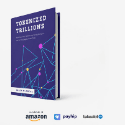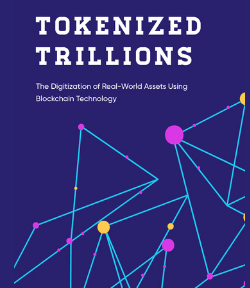
Global markets are celebrating record highs, inflation is easing, and central banks are quietly preparing to declare victory. But under the polished surface of investor optimism lies a quieter, more dangerous story — one of tightening liquidity and a growing dollar shortage that could soon ripple through the global financial system.
The U.S. dollar remains the backbone of global trade and finance. Nearly 90% of international transactions still settle in dollars, and offshore dollar liabilities now exceed $80 trillion, according to the Bank for International Settlements. Yet, despite this dependence, dollars are becoming harder to find. Behind the scenes, the world’s most important funding market — the U.S. repo system — is flashing red.
The Return of Stress in the Funding Markets
Over recent weeks, overnight lending rates in the U.S. have crept to the upper end of the Federal Reserve’s target range. This signals that banks are competing for scarce cash. The Fed’s standing repo facility, designed as a safety valve, has seen a sharp increase in usage — exceeding $15 billion in a single day. At the same time, primary dealers, the financial intermediaries that keep short-term markets functioning, are showing an unusual reluctance to lend.
What’s causing this? Two forces are converging. First, the Fed’s quantitative tightening (QT) programme — which drains reserves from the banking system — has pushed total reserves below $3 trillion, a threshold that many analysts consider the lower bound for stability. Second, the U.S. Treasury’s heavy issuance of short-term bills, meant to rebuild its cash reserves after the debt ceiling standoff, is soaking up liquidity from money markets.
The result is a silent crowding-out effect: government borrowing is consuming the financial system’s cash faster than the private sector can create it.
A Global Problem, Not Just an American One
For international markets, this is more than a technical issue. Foreign banks, corporations, and sovereigns are heavily reliant on dollar funding through FX swaps and offshore debt. When dollar liquidity tightens, these borrowers must scramble to buy dollars, pushing the currency higher and intensifying the squeeze.
This mechanism has sparked crises before. The 2019 repo turmoil in New York — when overnight rates suddenly spiked to 10% — was enough to force the Fed into emergency interventions. But today’s setup is far more precarious. The U.S. fiscal deficit is much larger, global leverage is higher, and the world’s dependence on synthetic dollar funding has only deepened.
Already, early tremors are being felt abroad. Euro-dollar spreads are widening, Japanese institutions are repatriating capital, and emerging-market borrowers are facing rising offshore funding costs. If the shortage worsens, the world could see a paradoxical rally in the dollar — not because of confidence, but because of desperation.
The Fed’s Tightrope

The Federal Reserve faces a dilemma. It can halt QT early and inject liquidity, risking a loss of credibility in its inflation fight, or continue tightening and risk triggering a dollar funding crisis. Either move has global consequences.
Markets expect a 25-basis-point rate cut at the next meeting and an announcement that QT will end by year-end. Such steps may calm funding markets temporarily, but they underscore how fragile the post-2008 system has become. Each cycle of tightening now ends not with stability, but with the Fed forced to reverse course to prevent liquidity from collapsing.
This dependency is dangerous. It reveals that financial markets, for all their complexity, are now sustained by a single assumption — that the Federal Reserve will always provide dollars when needed. Should that assumption break, the world’s most trusted funding system could seize up almost overnight.
The Coming Test
The signs are subtle but unmistakable: repo rates rising, reserves shrinking, and global funding spreads widening. These are not the symptoms of a healthy system. They are early warnings that the era of abundant liquidity — the one that powered every boom since 2009 — is drawing to a close.
The next financial crisis may not begin with failing banks or crashing stock prices. It may begin with something as mundane as the price of overnight money. And when that happens, the scramble for dollars will not stay within U.S. borders — it will race through Europe, Asia, and the emerging world.
For investors and policymakers alike, the message is simple: watch the plumbing, not the headlines. The real fault line in the global economy isn’t inflation or growth. It’s liquidity. And the world’s most important resource — the dollar — is quietly running dry.






